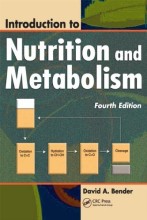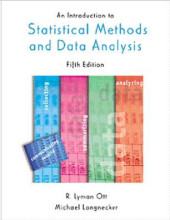NP17 Protein turnover and adaptation
17 important questions on NP17 Protein turnover and adaptation
What is the nitrogen balance?
total protein = 6.25 Nurine
INTAKE =EXCRETION
- N balance or equilibrium
- normal state in an adult
- no change in body protein content
What happens with the nitrogen balance, when:
- Intake > excretion
- Intake < excretion
- Intake > excretion
- positive N balance
- increase in body protein content
- normal state in growth, pregnancy and recovery form loss
- Intake < excretion
- negative N balance
- decrease in body protein content
- never normal; indicates illness, trauma or inadequate intake
Protein turnover and growth.
What does a steady state looks like and a deposition?
deposition --> the breakdown is lower than the synthesis
degradation level ....->
- Higher grades + faster learning
- Never study anything twice
- 100% sure, 100% understanding
What does the following mean:
Production animals: low turnover - high growth
- Reduced functional quality of body proteins
- Poor support for health and functional adaptability
- High net protein deposition rate
- Low life expectancy
What are the regulatory aspects?
- Differences between synthesis and degradation are normally under hormonal control
- Various hormones are involved and may have short or long term influences (e.g. Estradiol, cortisol)
- Artificial compounds are used as well
- Genetic selection
What is the influence of clenbuterol on protein metbolism?
Red is the growth
There is a net growth effect when clenbuterol is used. .....
Dynamic equilibrium: mechanisms involved in protein catabolism
- Lysosomal cathepsins
- broad range of specificities, complete hydrolysis of: ...
- Calpain-calstatin sytem
- celpain is a calcium-activated cysteine protease
- Ubiquitin-proteasome ATP-dependent system
- ubiquitin
- proteasome
Protein deposition
- How much energy is (at least) required to deposit 1 gram of protein in the body?
- how much energy is in the deposited protein?
- how much energy is needed for deposition
- What is the (max) energetic efficiency for the deposition of protein?
- how much energy is in the deposited protein?
- how much energy is needed for deposition
- Energy content of protein: 23.6 kJ/gram (GE); Costs for synthesis: 4 kJ/gram
- --> energetic efficiency = 23.6 / (23.6 + 4) = 0.85 = 85%
Why do we need dietary requirements for protein synthesis?
- Rene
wal of body proteins (A --> A)
- Maintenance of functional properties
- food, to compensate 20% losses
- Interconversion of body proteins (A--> B)
- Adaptation of functional properties
- food, to compensate > 20% losses
- Increase of body proteins (A --> A+)
- Net production of functional properties
- All from food, no option for re-utilization
Maintenance, adaptation, net deposition for protein synthesis, what is needed?
- unavoidable losses
- unavoidable losses + extra losses/needs
- unavoidable losses + extra losses/needs
ratio deposition : maintenance = 5:1
Protein requirement
- What is the metabolic basis for the protein requirement (=aa) of the body?
- Consider different physiological conditions
Protein synthesis and turnover
- Why is the dietary requirement for protein synthesis related to maintenance supposed to be lower then for synthesis related to adaptation?
- What about net protein deposition?
Some amino acids cannot be incorporated in new protein(s), so other amino acids are needed from diet.
Deposition needs more amino acids
Substrate cycling
- What do you consider as substrate cycling in protein metabolism?
- What are advantages and disadvantages of substrate cycling in protein metabolism?
Protein turnover
aa --> protein [atp is needed]
protein --> aa [no atp is needed or generated]
+ increase protein synthesis and degradation --> more heat production [functional proteins]
- you need more amino acids, it costs lots of energy [(relative high) energy costs]
Protein synthesis
- Make clear that daily protein synthesis in the body can exceed the daily protein intake
daily protein intake is 70
Protein synthesis
- What are the energetic costs for protein synthesis?
- Are these costs part of the GE (23.6 kJ/g)?
No, they are not part of GE
Synthesis: 5 ATP / mol aa (transcription & translation) ± 4 kJ/gram protein
Amino acid oxidation
- Need for energy
- Removal of excessive amino acids
- Protein turnover
- Basal activity of enzymes
Protein turnover
- Is the level to counterbalance loss of biological activity always the same as the level required for the rate of half-life?
- Half life is considered as availability of protein within body
- Give an example
The question on the page originate from the summary of the following study material:
- A unique study and practice tool
- Never study anything twice again
- Get the grades you hope for
- 100% sure, 100% understanding
































